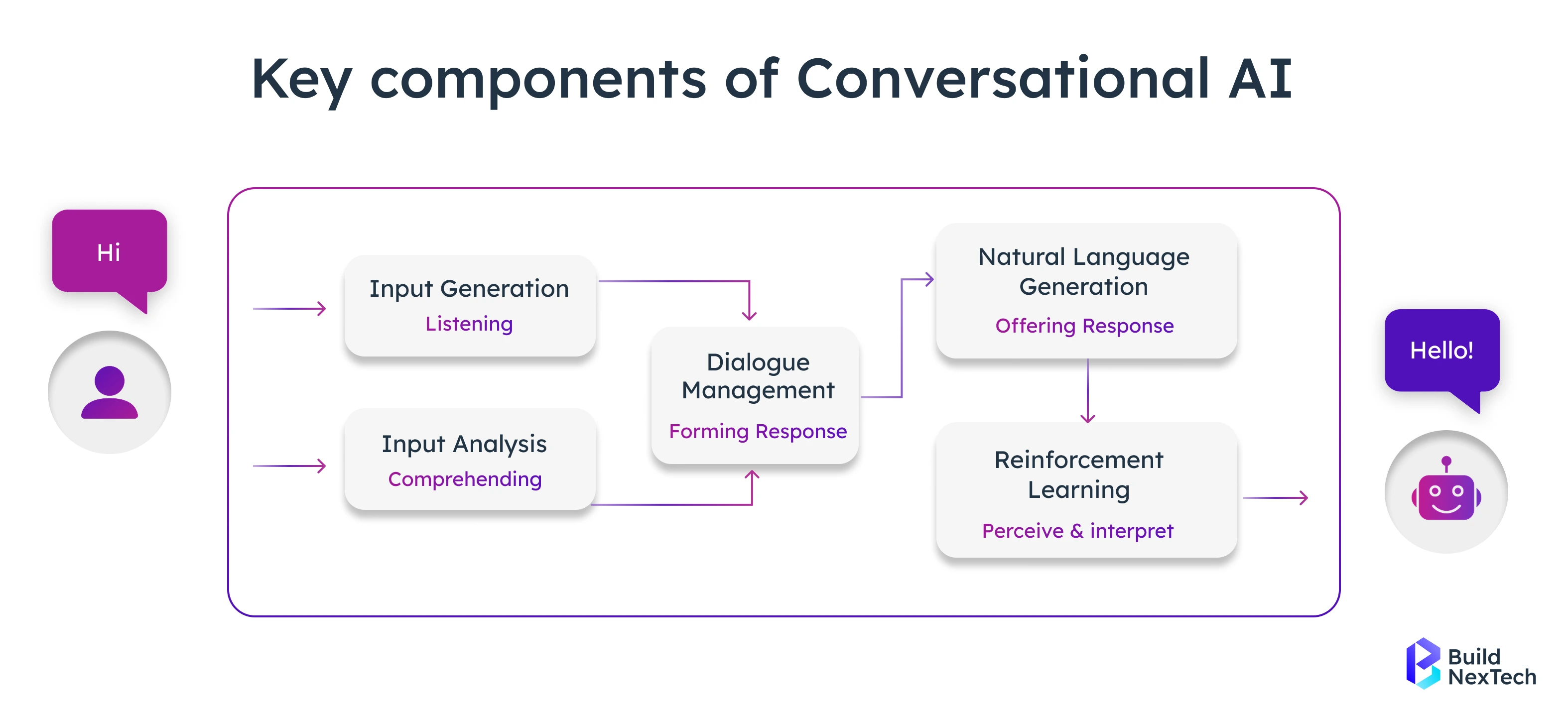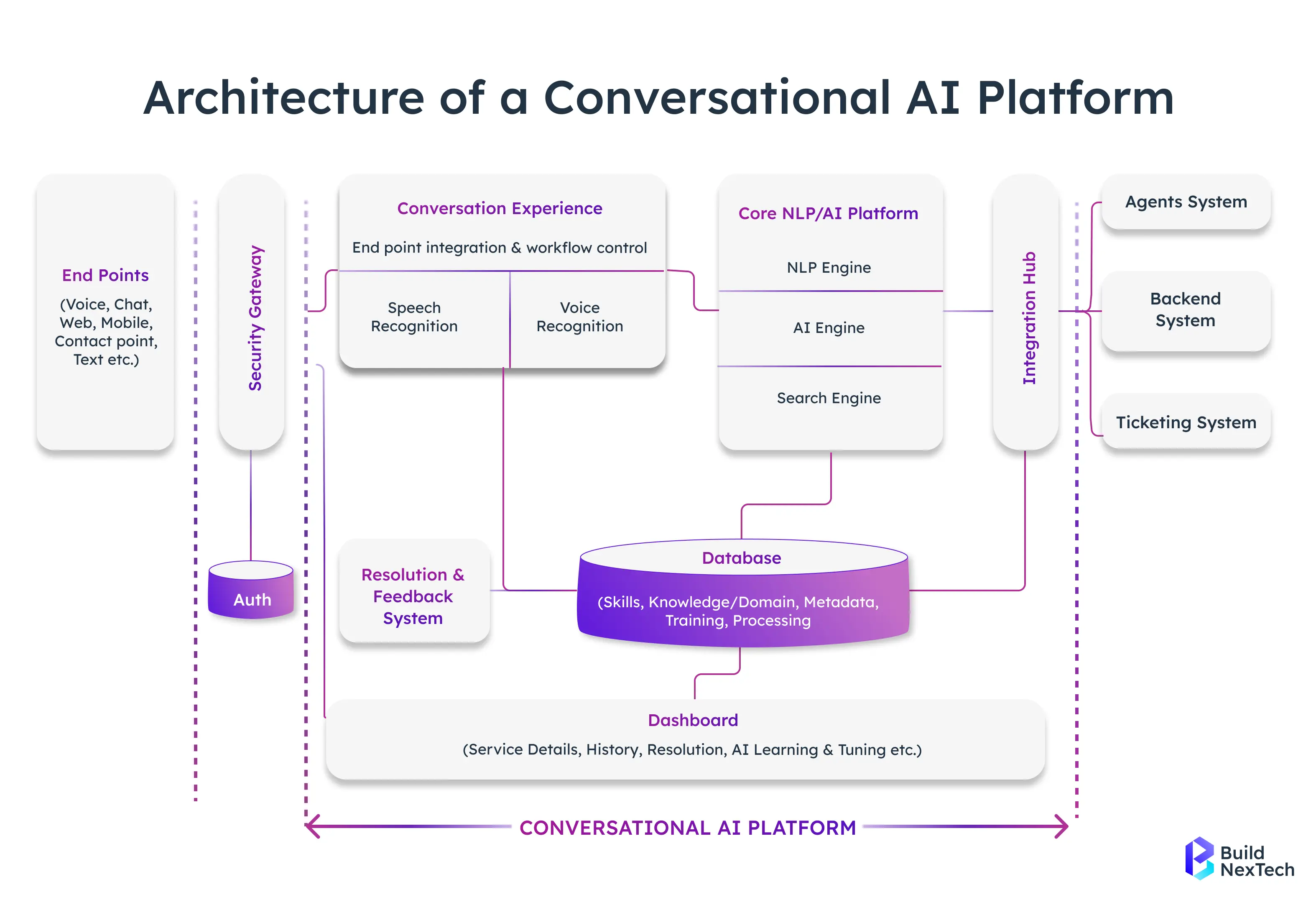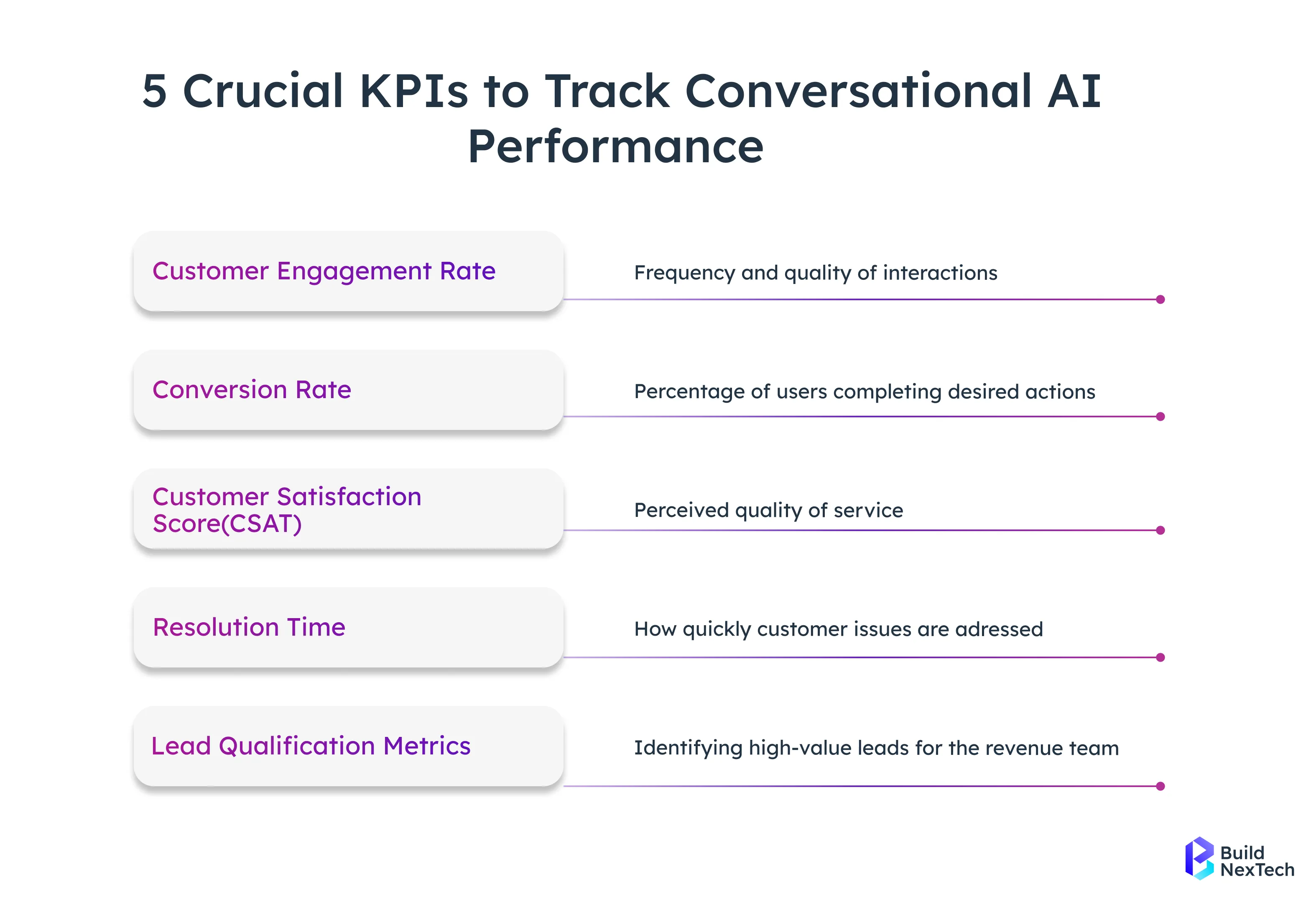The digital revolution has made conversational AI a game-changer in how brands manage customer engagement, support, and conversions. The days of dull forms and repetitive responses are long gone. Today, businesses deliver real-time, context-aware, and intelligent interactions that create personalized and engaging customer experiences.
A strong Conversational AI solution enables companies to reduce support costs, cater to customers according to their preferences, and reap the rewards in the form of higher customer satisfaction ratings. With AI chat agents, voice bots, and sophisticated AI agents, among others, these solutions allow companies to replicate human-like interactions that foster customer loyalty and increase website traffic.
In this guide, we’ll explore leading Conversational AI platforms — from IBM WatsonX and Drift to Intercom, Claude Code, Sakura AI, and Microsoft Bot Framework — built to transform engagement, streamline processes, and deliver results powered by artificial intelligence.
Understanding Conversational AI
Conversational AI is an evolving digital communication medium. Technology that allows companies to communicate in two ways and not just through one-way messages. By bringing together natural language processing (NLP), machine learning, and generative AI, companies are able to imitate significant conversations, driven by context, with their customers on various channels at the same time.
Conversational AI is different from conventional chatbots that depend on predefined scripts since it is constantly learning and evolving through its interactions, improving its precision and adjusting its tone. This flexibility gives organizations the capacity to provide 24/7 support, increase their customer service operations, and offer personalized interactions at every digital touchpoint.
Definition and Key Components
Conversational AI refers to technologies that enable computers to engage in human-like dialogue through text, voice, or multichannel interfaces. These systems combine several components:
- Natural Language Processing (NLP) and Natural Language Understanding (NLU) to interpret user intent.
- Machine learning (ML) and deep learning algorithms to improve responses over time.
- Speech recognition AI and voice assistants to facilitate hands-free interactions.
- Generative AI and large language models (LLMs) for creating dynamic, context-aware responses.
Unlike basic chatbots, which rely on predefined rules or keyword triggers, AI-powered chatbots use transformer-based NLU and retrieval-augmented generation techniques to understand meaning, not just words. This makes them adaptable across industries—from e-commerce and IT help desks to contact centers and enterprise systems.

The Role of Conversational AI in Digital Marketing
A Gartner survey of 5,728 customers conducted in December 2023 revealed that while customer service leaders are eager to adopt AI, customers remain concerned about its use within the customer service function. Businesses use AI-native customer experience platforms to scale personalized communication, streamline support workflows, and increase customer satisfaction.
For instance, AdLingo (Google’s conversational marketing platform) helped brands run interactive display ads that let customers chat directly within the ad unit—boosting engagement metrics by over 2x. Similarly, Moveworks, a conversational AI solution for IT help desks, reduced resolution times by 40% using automated intent recognition and workflow automation.
The takeaway: conversational AI isn’t just transforming customer interactions—it’s reshaping digital marketing, sales cycles, and brand sentiment.
Key Features to Look for in Conversational AI Platforms
Choosing the appropriate conversational AI platform entails weighing intelligence, scalability, and integration capabilities against each other. The primary characteristics consist of highly developed NLP and NLU for understanding intent, machine learning models for contextual learning, and hassle-free API integrations with CRM or enterprise systems for real-time automation.
Analytics and feedback intelligence tools that measure engagement quality and conversion outcomes are also very significant. The most powerful platforms join low-code interfaces with profound backend connectivity, thus allowing both marketing and IT teams to roll out AI-driven conversations rapidly and effectively.

Natural Language Processing (NLP)
At the core of every effective conversational AI platform is NLP, the technology that allows systems to comprehend and respond to human language. Advanced NLP techniques—such as transformer-based NLU and generative AI agents—help recognize intent, sentiment, and context with high accuracy.
Leading examples include:
- Google Dialogflow is known for its multilingual support and seamless integration into messaging apps.
- IBM WatsonX, which uses composite AI and knowledge store capabilities to train domain-specific models for enterprises.
- ChatGPT by OpenAI which applies LLMs to deliver nuanced and context-aware dialogues across channels.
Integration Capabilities
The ability to connect easily with enterprise systems, CRM tools, and backend systems defines a platform’s real-world utility. Strong API integrations enable end-to-end automation, linking the conversational layer to ticketing platforms like Zendesk, analytics tools like Drift, or marketing platforms such as Salesforce Einstein and Salesloft.
This interoperability supports workflow automation. It also helps agents assist functions and customer self-service. These improvements lead to better customer experience and operational efficiency.
Analytics and Reporting
Measuring engagement and conversion success requires real-time analytics and feedback intelligence. Platforms like Drift AI Chat and Intercom provide conversation-level reporting, tracking metrics such as qualified leads, buyer experience, and pipeline influence.
Using AI-powered tools to analyze conversational data can reveal insights into customer journeys, FAQs, and sentiment trends, helping brands forecast demand and Transform CX (customer experience) continuously.
Top Conversational AI Platforms for Engagement
An increasing number of AI-powered platforms are changing the way brands engage with their consumers. OpenAI's ChatGPT is the front-runner with its generative powers that are capable of understanding complicated contexts, and at the same time, the Microsoft Bot Framework has already provided Azure integration tools that are suitable for big enterprises.
ManyChat, for its part, is the queen of social media with its business-supported automatic interaction and lead acquisition. IBM WatsonX, Drift, and Intercom are other important names whose features include real-time analytics, workflow automation, and customer journeys with personalized conversations. Each of these platforms has its own unique benefit, ranging from enhancing the productivity of the company to increasing the number of customers engaged.
ChatGPT by OpenAI
ChatGPT has set a new standard in conversational AI through its use of large language models and retrieval-augmented generation. Its adaptability enables enterprises to deploy AI-powered chatbots, virtual agents, and voicebots across multichannel environments.
Companies have seen substantial gains in engagement and conversion using ChatGPT-driven AI agents for lead generation, customer support, and inbound scheduling. Many organizations now integrate it into their knowledge systems and contact center ecosystems, enhancing customer self-service while reducing operational costs.
Microsoft Bot Framework
The Microsoft Bot Framework offers developers a low-code and pro-code environment to build virtual assistants, voice bots, and AI-powered business messaging platforms. Its deep API integrations with Azure Cognitive Services and speech recognition AI make it ideal for enterprises that require scalability and enterprise-grade customization.
Brands like GOTV and Learning & Development platforms have used it to drive personalized text messaging, broadcast SMS, and voter engagement campaigns, achieving notable improvements in email open rates and qualified leads.
ManyChat
ManyChat specializes in marketing automation and lead generation, particularly across social messaging channels such as Facebook Messenger, Instagram, and WhatsApp. Features like Click-to-Messenger, broadcast SMS, and self-service tools make it a go-to solution for e-commerce and small businesses.
E-commerce brands using ManyChat have reported up to 30% higher conversion rates and 20% improved sales recovery through automated Sales & Revenue Recovery workflows. The platform’s no-code interface allows marketing teams to create conversational campaigns without technical dependencies—simplifying the journey from leads to revenue.
Conversational AI for E-commerce
E-commerce brands are adopting conversational AI as a tool for making the shopping experience without any fuss. Customized product recommendations, quickly helping buyers along the checkout process, and instant support query resolution are the main functions of chatbots and voice assistants powered by AI.
Customer satisfaction is improved through this process, and simultaneously, it also helps in lowering cart abandonment rates and raising the number of customers making purchases. In addition to that, the technology is able to support multiple languages, provide self-service tools, and integrate into CRM and inventory systems, thus making it possible for the online stores to become responsive and customer-centric ecosystems.
Enhancing Customer Experience
E-commerce thrives on instant, personalized communication. Conversational AI platforms empower brands to deliver AI-powered customer support around the clock, provide multilingual assistance, and guide shoppers through personalized recommendations.
Brands like Sephora use virtual agents to offer tailored product suggestions through messaging and voice channels, while H&M deploys AI chatbots to help customers find styles faster—improving both customer satisfaction and engagement.
Conversational AI integrates with knowledge bases and enterprise systems. It ensures every customer gets consistent information. This turns customer interactions into conversion opportunities.
Driving Sales and Reducing Cart Abandonment
According to industry studies, AI-powered chatbots can reduce cart abandonment by up to 35%. By triggering personalized prompts and automated follow-ups, these AI agents identify high-intent buyers and shorten sales cycles.
Platforms like Drift, Salesloft, and Alltius provide AI-powered conversational tools that align sales and marketing efforts—improving pipeline efficiency and driving measurable revenue growth. When integrated with enterprise-grade controls and workflow automation, these platforms create a cohesive, omnichannel experience from discovery to purchase.
Measuring the Success of Conversational AI Implementations
Data-based evaluation is key to measuring the success of conversational AI. Businesses track core KPIs such as engagement rate, customer satisfaction, conversion rate, and resolution time to assess performance.
AI agents are evaluated through real-time analytics and sentiment analysis, while continuous user feedback improves intent recognition and response accuracy. The most effective systems remain flexible, adapting to both customer behavior and business goals.
Key Performance Indicators (KPIs)
Tracking the right KPIs helps measure how effectively a conversational AI platform drives engagement and conversions.
- Customer Engagement Rate: Evaluates how often and how meaningfully users interact with AI chatbots or voice assistants.
- Conversion Rate: Measures the percentage of users completing desired actions such as sign-ups or purchases.
- Customer Satisfaction Score (CSAT): Reflects user happiness and perceived service quality.
- Resolution Time: Indicates how quickly AI agents resolve customer issues or answer queries.
- Lead Qualification Metrics: Identifies high-intent or high-value leads for the sales and revenue team.
These KPIs, supported by real-time analytics and feedback intelligence tools like Drift or Zendesk, help businesses fine-tune automation, improve response accuracy, and enhance the AI-powered customer experience.

Tools like real-time analytics dashboards and feedback intelligence systems (integrated with Zendesk or Drift) help track these KPIs and assess campaign effectiveness.
Continuous Improvement through User Feedback
A strong customer engagement strategy depends on ongoing feedback loops. Gathering user insights through integrations with tools like SurveyMonkey or Drift Feedback helps refine AI models and improve dialogue accuracy.
Modern AI platforms include self-serve AI that adapts to customer journeys automatically. This AI learns from every interaction. It improves intent recognition, dialogue management, and knowledge system performance.
Conclusion
Conversational AI platforms are transforming how businesses interact with customers—streamlining support, driving sales, and enhancing customer satisfaction across industries. From ChatGPT’s generative AI agents and IBM WatsonX’s composite AI to Drift’s conversational data insights, these technologies represent the next generation of AI-powered customer experience.
Choosing the right platform requires aligning Business Needs with capabilities in NLP, integration, analytics, and workflow automation. The result is a scalable, omnichannel strategy that not only improves engagement but also drives tangible revenue outcomes.
Businesses should evaluate the platforms discussed here if they want to change their contact center ecosystems, IT help desks, or e-commerce workflows. They should explore how conversational AI can change digital engagement and conversion performance in the age of artificial intelligence.
Call to Action: If your organization is ready to elevate engagement through AI-powered chatbots or virtual agents, explore these platforms, benchmark your KPIs, and share your experiences. The future of customer experience is conversational—and the time to transform is now.
People Also Ask
What distinguishes conversational AI from traditional chatbots?
Conversational AI employs natural language comprehension and context preservation to support lively, human-like interactions, whereas traditional chatbots only provide scripted and keyword-based responses.
In what ways does conversational AI enhance customer engagement?
Real-time, personalized conversations that continuously adapt to user intent are the main outcome of the technology; thus, stronger relationships and higher satisfaction rates for brands are the main outcomes as well.
Will conversational AI be able to link up with the existing CRM or helpdesk systems?
Certainly, most conversational AI solutions are such that they can connect with CRMs and ticketing tools without any problem, thereby allowing for a single flow of data and quicker customer assistance.
Is the use of conversational AI limited to large enterprises only?
The answer is yes — modern solutions have flexible pricing and no-code options that can be used just about anywhere, making the use of conversational AI possible even for the smallest startups and SMEs.


























.webp)
.webp)
.webp)

